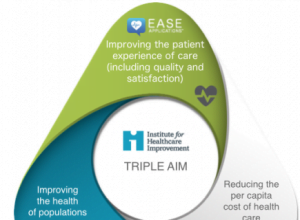Since stem cell research and development is moving so fast, this article brings up a lot of good questions as to how regulation will or will not take place. As the rules/laws read, culturing stem cells in the eye of the FDA is considered a “drug”. The article talks about a “tool kit” being in place in a few years at a physician’s office. Guidelines are being developed by the American Stem Cell Therapy Association for safe use, like fertility clinics where state laws would have jurisdiction.
Since stem cell research and development is moving so fast, this article brings up a lot of good questions as to how regulation will or will not take place. As the rules/laws read, culturing stem cells in the eye of the FDA is considered a “drug”. The article talks about a “tool kit” being in place in a few years at a physician’s office. Guidelines are being developed by the American Stem Cell Therapy Association for safe use, like fertility clinics where state laws would have jurisdiction.
Stem cells are taken from the patient and injected back, no cells from outside sources and this kind of reminds me a bit of the Provenge cycle with the anti immune drug with being processed and re-injected so in time we will have entirely new classes of drugs and treatments for a lot less cost potentially. One remark made here too is the fact that a $60 billion dollar drug and device care system would be in time reduced to a $6 Billion dollar stem cell business and of course there’s not much more that needs to be said there with the number of drug and device companies in business, although not all would go away but the number of devices and drugs that we used today could shrink. BD
Within the next five years, it’s quite possible that physicians will come into routine possession of a remarkable set of tools — a brand new way of dealing with the frailty and disabilities of aging. The tool kit is autologous stem cells derived from the patients themselves, amplified in culture, and infused back into the patient according to a precise protocol. It would be such a leap from today’s medical diagnostics and treatments; it could only be called revolutionary.
The purpose of employing autologous cells is to prevent rejection of histo-incompatible cells by the patient’s immune system. But it’s also possible that these new therapies could slip from our grasp, at least in the US. If we’re not careful, these therapies could become the exclusive domain of the pharmaceutical industry, as regulated by the Federal Food and Drug Administration (FDA). This could push the availability of this tool kit 15 to 20 years into the future. The opportunity-cost in terms of morbidity and mortality could be catastrophic.
We’ve got an organization to formulate guidelines, and we’ve got clinicians working to form a stem-cell registry. But the FDA doesn’t appreciate that. We only do adult cells from the same person. But the FDA contends that if one cultures stem cells at all, regardless of the use of those cells, then it’s a prescription drug.” He points out that the age-management community has seen many instances where the FDA has tried to insert itself into the practice of medicine — although this has been strictly prohibited by Congress — and this is just the latest. “Compounding pharmacies have been coming under FDA pressure for a long time, and have now organized and set up their own standards and guidelines as a way to combat that interference.”
“You’re talking about replacing $60 billion in drug– and device-care with $6 billion in stem-cell care,” Dr. Centeno observes.
Will the FDA Kill Adult Stem Cell Medicine? | medical students exam Blog







